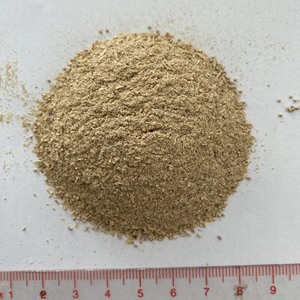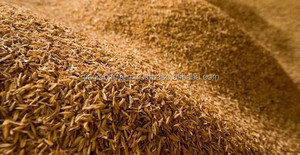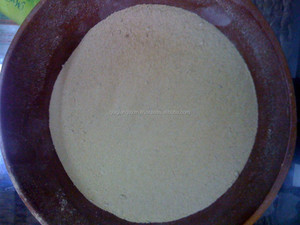
All categories
Featured selections
Trade Assurance
Buyer Central
Help Center
Get the app
Become a supplier

(6773 products available)













































Rice and wheat husk are the outermost, inedible, and non-digestible parts of rice and wheat grains after they are processed for food. Though they are waste material and of no value in the culinary world, they provide plenty of preservative and nutritional benefits when used as animal feed or for other applications.
Rice husk is the hard protective covering of rice grains. Rice husk is a non-conventional energy source with properties that make it useful in construction, as an abrasive, in silicates, etc. It is lightweight and mostly composed of 20-30% cellulose, 40-50% lignin, and 20% silica. Rice husk is often used as a substrate for growing mushrooms, especially in China and India. It's also been used experimentally in the cultivation of rice by the System of Rice Intensification (SRI), which promotes the use of organic matter to keep water in paddy fields while reducing the need for chemical fertilizers.
Wheat husk, known as chaff, is composed of small, rough, and straw-like bits that get separated from the grain during milling. It is usually discarded with the straw after harvesting and is much less than rice husk. About 60% of wheat chaff is cellulose, while other parts comprise lignin, hemicellulose, and other organic materials. Wheat husk is bio-degradable and compostable. When composted, it can produce valuable organic matter and minerals. Wheat husk can also be burnt as biomass fuel or processed into biomass pellets and used in the same way as rice husk for energy generation. Both rice and wheat husks can be used to produce ash after burning, which contains many minerals and is sometimes referred to as silica husk due to the high percentage of silica in the ash.
Both types of rice wheat husk are often considered useless pieces and are discarded, but they can provide valuable nutritional benefits when used for other purposes. About 10% of rice and wheat husk is produced every year, and an estimated 80% of the total is used as biomass fuel. Some of the uses of rice and wheat husk are:
As stated above, rice husk has an abundance of applications. Depending on whatever use it is for, several specifications apply.
Size
Rice husk is often 0.5-1 cm in length and around 0.15-0.25 cm in diameter. However, the exact size and shape vary depending on the type of rice, the way the rice is milled, and other related factors. The rice husk fiber might also be spun around to create fluffy filaments.
Heat Value
Due to the composition of rice husks, their ability to produce energy when burnt is comparatively low, compared to other biomass materials. Husks from non-aromatic rice typically have a calorific value of 12-15 MJ/kg when burned. On the other hand, aromatic rice husks may have a calorific value of 15-18 MJ/kg. This is somewhat similar to wheat husk calorific value. When it comes to energy production, this trait makes it more suited for power plants or specialized boilers designed for rice husk.
Ash Content
Rice husk consists mostly of silica. This makes rice husk ash content rather high – around 20% (or more) of its total mass – after combustion. The chemical composition of ash produced by rice husks is quite variable, much like its silica content, and is often affected by the content of the rice grains. Excessive ash accumulation in boilers, furnaces, and power plants may cause obstructions and require frequent cleaning and maintenance.
Water Absorption Capacity
When handling or storing rice husks, this function is significant. Their water absorption capacity is around 80–90% of their own mass. In turn, this helped in controlling the moisture content of the biomass gasifier and the fuel feeding mechanism.
pH Value
The rice husk's chemical makeup may change depending on the region where it is grown. This includes soil composition as well as weather circumstances. Consequently, the pH of dried rice husks often falls between 6 and 8. This implies that the material is neither acid nor base, making it neutral. When using rice husk in agriculture, this characteristic is very useful. It guarantees that the soil structure won't become acidic or basic, hence enhancing the development of plants and microorganisms.
Proper maintenance of rice husk is incredibly vital, especially in industries where it is used to generate energy. Keeping the rice husk dry has merit to a great extent. Damp rice husk has a propensity to decay and emit heat. As a result, it poses a significant risk of spontaneous combustion, creating fires. Furthermore, since water promotes the growth of bacteria and mold, keeping it dry reduces biological pollution. Last but not least, water reduces the burning energy of rice husk. Thus, eliminating excess moisture maximizes production.
Storage is among the best ways to maintain rice husk. Rice husk can be kept in a silage bag, a cement warehouse, or a plastic barrel. But whatever the container, it should be waterproof and have a low moisture content. A cement storage facility with a closed bottom would serve to reduce the flooding effect as well as evaporation. The storing bags used for silage, on the other hand, should be well compressed, sealed, and stored in a tidy, tidy environment. In addition, the bags shouldn't contain more than a meter's worth of husk rice. An extra 0.5 m should also be applied to the surface of the stored rice husk in order to create a buffer zone when removing it from the bag.
Proper transportation of rice husk also helps maintain its longevity. When transporting rice husk, care should be taken to ensure it is not subjected to frequent rainfall. This can be prevented by having a covering on it and utilizing a trailer with a proper fence. Also, because it takes longer to absorb moisture during exposure to air when being transported, the vaule should not be given when using closed containers.
Industries make use of the rice husk ash (RHA) generated from rice husk in diverse ways. The construction industry leverages RHA for the production of concrete, mortars, and cement. When incorporated into these material mixtures, RHA functions as a pozzolanic additive—improving the concrete's durability while simultaneously reducing its environmental impact.
The agricultural sector isn't left out in the utilization of rice husk ash either: it finds application as an item for improving soil conditions or as an auxiliary feed component. Ash derived from burnt rice husks serves to enhance soil drainage capacity and boost fertility levels—affording great protection against pests and diseases too—when added to livestock feed, it aids in preventing scald and boosting digestive health of animals such as poultry.
In energy production, RHA holds an important position by serving as an invaluable feedstock for bioenergy generation through combustion, gasification or pyrolysis methods—thereby producing heat energy or biofuels from it. Circular economy concepts are reinforced by such practices where waste gets transformed into useful sources of power energy.
By-Product Treatment and Disposal: Proper disposal and treatment of rice husk ash are paramount if we are to safeguard the environment. Landfilling should only be considered after exhaustive studies on possible ways to use it up rather than just throwing it away into landfills since this could have harmful impacts on our surroundings too.
Therefore, rice wheat husk is not waste. It has great potential value for many industries. What we should do is to exploit its potential and create a win-win situation for the economy and the environment.
Buying grain husks is a task that needs careful and thorough thought to ensure what is purchased is suitable to use or sell. The following tips for selecting grain husks will help:
Quality:
When buying rice husks or wheat husks, the first thing to consider is the quality of the husks. Make sure they are not damaged, decayed, or contaminated. Grain husks that are damaged or decayed will have an unpleasant odor and will lower the final product's quality if used for animal feed, fuel, biochar, or rice and wheat milling. Grain husks that are contaminated could have harmful microorganisms or chemicals that could endanger health.
Quantity:
The amount of grain husk needed should correspond with the amount of space available for storage. Be realistic about how many grain husks can be safely stored without compromising their quality or attracting pests. Make sure the supplier can meet the required quantity and delivery schedule.
Distance:
Choose a provider that is not too far away. This will limit transportation costs that can add to the final product's price. However, the distance must be reasonable enough that the grain husk will not deteriorate by the time it arrives at its destination.
Supplier:
Select a trustworthy and well-known supplier with a proven track record. The grain husk supplier should offer various types and have extensive industry knowledge. They should be able to provide documentation and certification that attests to their grain husk's quality. And finally, their customer support must always be available and ready to assist buyers with whatever queries or requests for assistance.
Usage:
What purpose grain husks will serve should dictate what type or kind to buy. For example, rice husks are ideal for use as animal feed for livestock, poultry, and other pets because they are low in energy and high in fiber, which aids digestion, while wheat husks are beneficial as fuel for biomass pellets, biochar, and rice mill machines.
Q1: What is rice husk biomass?
A1: Due to its high silica content, rice husk is considered a great biomass fuel. When burned to produce energy, it leaves plenty of ash. Rice husk ash can be used in cement and concrete as a partial replacement for silica.
Q2: Is rice husk a biomass?
A2: Rice husk is a huge biomass resource. The carbon contained in rice husk can be utilized to generate heat energy through combustion or chemical reactions. The heat energy generated can be used directly or indirectly to provide power. For example, during the process of making biochar from rice hulls through pyrolysis, carbonized rice husk is known as rice husk biochar.
Q3: What is rice husk used for?
A3: Rice husk has many useful applications. About 20%–30% of the entire rice production is rice husk, which is often seen as waste. Nevertheless, rice husk can be made into rice husk board, rice husk cement, and rice husk Asteel. Besides, as previously stated, rice husk is a promising biomass fuel. It can also be used to make animal feed or burned to produce energy for rice milling machinery.